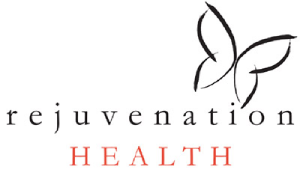Biological dentistry considers the mouth connected to all body systems. Oral health corresponds with whole-body health. As we understand more, we see connections between the mouth and chronic diseases, including Lyme disease.
Keep reading to uncover more about these connections, including:
- What is Lyme disease?
- Lyme disease symptoms
- How Lyme disease affects oral health and vice versa
- Lyme disease recovery support with dental care
What is Lyme Disease?
Lyme disease is caused by a bacterial infection from Borrelia burgdorferi. It’s the most common vector-borne disease, affecting over 475,000 people in the United States annually.
Acute Lyme disease symptoms appear within a few days of infection, yet many people experience persistent and chronic symptoms even after treatment, known as chronic Lyme disease.
Tick Bites
Infection from Borrelia burgdorferi occurs after a tick bite from a black-legged tick (deer tick). These ticks are most common in the Northeast and Midwest states and can affect anyone, particularly those with more exposure to wooded areas or work outside.
General Lyme Disease Symptoms
Acute signs of Lyme disease can appear as flu-like symptoms, including headaches, fever, fatigue, muscle aches, and swollen lymph nodes.
Skin Rash
A bulls-eye rash around the tick bite is a classic sign of a tick bite and should raise flags for possible Lyme disease. It will appear as a red oval or circular rash. Some people may experience Lyme disease without noticing a rash.
Headache
Early signs of Lyme disease may feel like you’re coming down with a cold or the flu and include headaches. Headaches have other possible causes, such as dehydration, stress, or hormonal fluctuations.
Fever
Fever is another sign of early Lyme and other infections. If you’ve had a tick bite or suspect one, take the fever seriously.
Fatigue
Fatigue often accompanies the fever, headaches, and other flu-like symptoms.
Beyond the acute symptoms, Lyme disease may have a chronic presentation. Chronic symptoms may manifest after the initial infection and are often mistaken for other diseases, including chronic fatigue syndrome, fibromyalgia, or autoimmune disease. Even those treated for the initial Lyme infection may continue to experience cognitive issues, musculoskeletal pain, and other significant symptoms.
Chronic Lyme disease may lead to:
- Neurological disease
- Lyme arthritis
- Lyme carditis
Connection Between Lyme and Oral Health
Lyme disease may also cause changes in oral health. New oral symptoms could signal your dentist that your body is fighting an infection.
Oral Symptoms of Lyme Disease
Oral symptoms that correlate with Lyme disease may include:
- Dry mouth
- Inflammation of dental pulp
- Orofacial pain
Dry Mouth
Saliva is essential for dental health; it supports healthy enamel, moisture, and microbiome balance. Dry mouth refers to decreased saliva production and associated symptoms such as increased cavities and periodontitis. In some cases, dry mouth can affect taste, speech, and swallowing.
Dry mouth can be a symptom of Lyme disease, and dry mouth can further impact oral health.
Inflammation of Dental Pulp
The dental pulp is the tooth’s innermost layer, where nerves and blood vessels are found. Pulpitis, or the inflammation of the dental pulp, causes pain and discomfort. Lyme disease and other infections can be the source of inflammation.
Orofacial Pain
Orofacial pain includes pain experienced in the mouth, jaw, and face. One example is TMJ, temporomandibular muscle and joint disorders. Orofacial pain has many possible root causes, and one possibility is Lyme disease.
How to Improve Oral Health to Support Lyme Recovery
Just as Lyme disease affects the mouth, supporting oral health can aid in recovery from Lyme disease.
Oral health is always important but may be essential while the body is fighting an infection. Lyme disease causes a rise in inflammation, contributing to oral symptoms and exacerbating systemic Lyme symptoms.
Additionally, antibiotic treatment for Lyme disease may damage the delicate oral microbiome. Improving dental health through good oral hygiene, diet, probiotics, and other tools can help restore balance and resiliency to the body.
Good Oral Hygiene
Preventive dentistry and good oral hygiene include:
- Daily brushing with a mouth-friendly toothpaste
- Flossing daily
- Eat nutrient-dense foods that support dental health and the oral microbiome (Find what to eat here.)
- Taking oral probiotics
Read Everything You Need to Know About Preventive Dentistry for the details.
See Your Dentist at Least Twice a Year
In addition to at-home mouth care, see your dentist regularly for checkups and cleanings. Choose a biological dentist with an awareness of whole-body connections. Your mouth is a doorway to your body, and a good dentist will be able to notice changes in your oral health and consider what is going on in the system, such as an infection like Lyme disease.
If you’re ready for this progressive dental experience, schedule an appointment today!
References:
- Bobe, J. R., Jutras, B. L., Horn, E. J., Embers, M. E., Bailey, A., Moritz, R. L., Zhang, Y., Soloski, M. J., Ostfeld, R. S., Marconi, R. T., Aucott, J., Ma’ayan, A., Keesing, F., Lewis, K., Ben Mamoun, C., Rebman, A. W., McClune, M. E., Breitschwerdt, E. B., Reddy, P. J., Maggi, R., … Fallon, B. A. (2021). Recent Progress in Lyme Disease and Remaining Challenges.Frontiers in medicine, 8, 666554.
- Rebman, A. W., & Aucott, J. N. (2020). Post-treatment Lyme Disease as a Model for Persistent Symptoms in Lyme Disease.Frontiers in medicine, 7, 57.
- Assy, Z., Bots, C. P., Arisoy, H. Z., Gülveren, S. S., Bikker, F. J., & Brand, H. S. (2021). Differences in perceived intra-oral dryness in various dry-mouth patients as determined using the Regional Oral Dryness Inventory. Clinical oral investigations, 25(6), 4031–4043.




